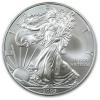| Online: | |
| Visits: | |
| Stories: |

| Story Views | |
| Now: | |
| Last Hour: | |
| Last 24 Hours: | |
| Total: | |
After The BOJ And ECB, Will Yellen Disappoint Next? SocGen Warns There Is “Risk The Market Will Be Wrong-Footed”
On October 30, the BOJ was widely expected to do something and disappointed markets by doing nothing.
Then, on December 3, the ECB had pushed markets into a rabid, EURUSD-shorting frenzy only to dramatically disappoint by doing the barest of minimums compared to the historic pre-jawboning by Draghi and company.
Today, according to the market there is nearly a ~80% probability that the Fed will announce the first rate hike, precisely 7 years to the day after it cut rates to zero.
But can it too disappoint, either by not being dovish enough in its language, or by actually not following through with the most telegraphed rate hike in Fed history?
According to ScGen, the Fed is widely expected to start tightening policy on Wednesday and adds that “after the BoJ and ECB, we see a risk that the market will be wrong-footed for a third time, and that extreme positions built ahead of tightening will be reversed.“
Perhaps, we will see shortly, although when everyone is on the same side of the boat, we agree that the temptation to “sell the news” will be huge, a temptation which could manifest itself most directly an unwind of an unprecedented amount of USD longs.
Here is what else SocGen believes:
- US assets tired: Fed liftoff, the first step to the next recession (H2 18). The US economy has behaved as expected in recent months and looks strong enough for the Fed to start normalising its monetary policy. We expect the tightening cycle to end by 2019, albeit at a relatively gradual pace. We think US assets are tired. We have already reduced our allocation to Treasuries to focus on European peripheral nominal bonds and US TIPS, which should benefit from inflation prints crawling higher over the coming quarters, along with sustained US GDP growth in 2016.
- Still very large long US dollar positions ahead of Fed liftoff. However, we also think that most of the USD rally is behind us, with the Fed on the brink of effectively starting tightening but only on a very gradual glide path to normalisation. In terms of positioning, we still see very large long net positions against the EUR and against JPY in particular, even if selling pressure on these currencies eased somewhat in the last few weeks as the ECB and BoJ failed to deliver more QE. Is there a risk investors will be wrong-footed for a third time this Wednesday by the Fed?
- A boost to oil prices while awaiting a more balanced market. We expect some relief for the commodity complex as USD strengthening has contributed to the drop in commodity prices since July 2014. In the short run, there could be a relief rally in oil in particular, with less selling pressure. In the longer run, we expect a rebalancing of supply and demand to support prices from the middle of next year.
- Increased probability of a relief rally in EM currencies. We concentrate our EM exposure on Eastern Europe and Latam. EM currencies have been hit in recent years by a combination of Fed tightening fears, concerns about growth prospects (especially in China) and lower commodity prices. This downward trend has been exacerbated by domestic factors, such as political and governance issues (e.g. in Brazil, Russia, Turkey, South Africa). Our more constructive view on commodities, especially oil, would help support EM commodity currencies on a one-year horizon. In the shorter term, more constructive Chinese data recently and a dovish Fed stance could support a rebound. However, we think Asia remains vulnerable, as we expect the Chinese currency to continue depreciating. This would likely trigger another round of depreciation in EM Asian currencies, also increasing credit risk in the region .
Finally, and most importantly, for US capital markets, this is what SocGen thinks are the most vulnerable US assets:
High yield and small caps: casualties of Fed tightening – steer clear. Ahead of Fed tightening, we have steered clear of illiquid assets, such as US HY (zero exposure in our MAP allocation) and small caps. Stress has increased already in the HY market, with spread widening and increased implied probability of default in a wide array of sectors (not only oil). In particular, we are short US small cap equities vs large via being short Russell 2000 vs S&P 500. Small caps have done very well in the last few years relative to large caps, supported by abundant global liquidity, quantitative easing and the flight to equities as fixed income yields fell. But small caps are now more expensive than large caps in P/E terms, and structurally more volatile. As the Fed tightens and the market enters into a lower-liquidity environment (and higher-volatility regime), we think the premium on small caps is no longer justified. Going forward, we prefer to gear exposure to the global growth outlook vs US domestic growth (already at 65% of its current economic cycle). That relative value within the US equity market is also a hedge against risk-off periods and offers protection in a multi-asset portfolio.

Source: http://silveristhenew.com/2015/12/16/after-the-boj-and-ecb-will-yellen-disappoint-next-socgen-warns-there-is-risk-the-market-will-be-wrong-footed/




